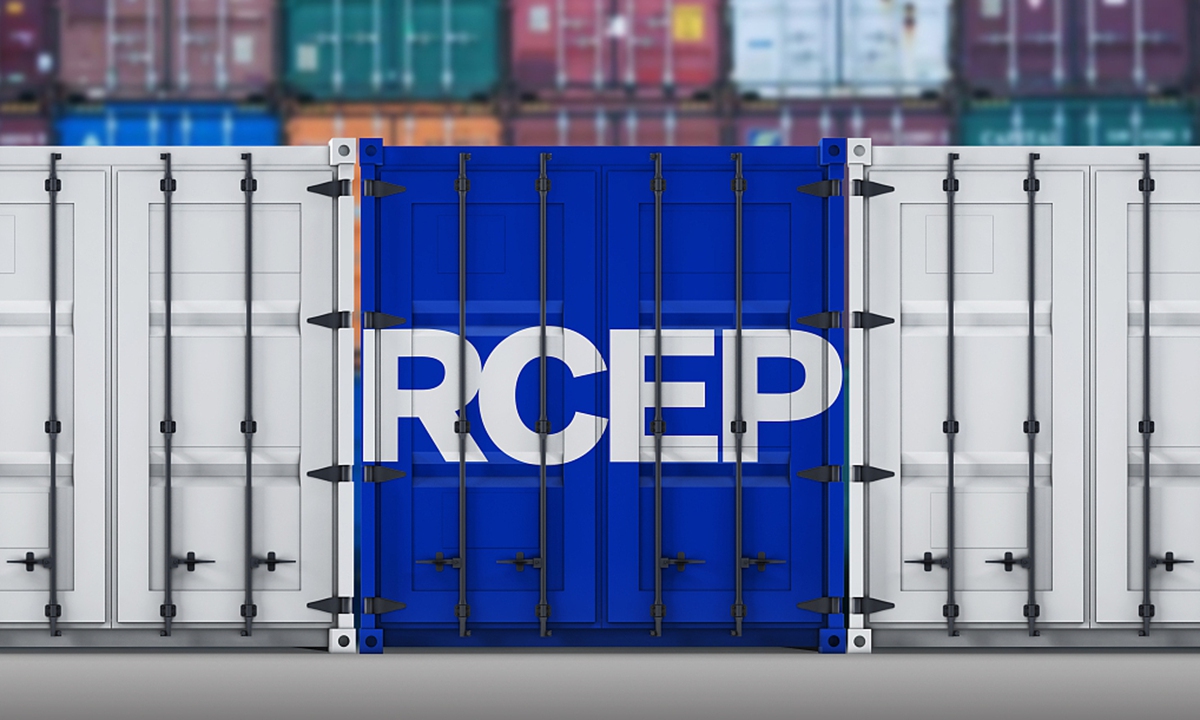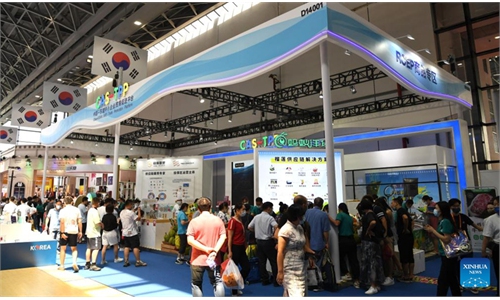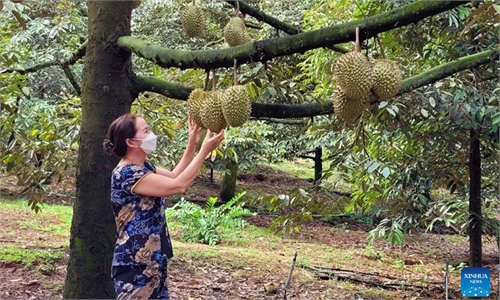China’s trade with RCEP partners surge 7.9% in Jan-Nov, as pact becomes major boost for trade

RCEP Photo:VCG
China has witnessed soaring trade with other members of the Regional Comprehensive Economic Partnership (RCEP) in the past 11 months, with trade with RCEP partners accounting for more than one-third of China's total foreign trade, official data showed on Thursday.
The RCEP, which took effect on January 1, has become a powerful support for China's foreign trade, and it plays a leading role in the recovery of the global economy, Chinese observers said. They predicted that China will continue to play an important locomotive role for the recovery of global trade.
Trade between China and other RCEP members hit 11.8 trillion yuan ($1.69 trillion) from January to November, a year-on-year increase of 7.9 percent and accounting for 30.7 percent of China's total foreign trade, according to data from the Ministry of Commerce (MOFCOM).
China's exports to other RCEP members reached 6 trillion yuan, a year-on-year increase of 17.7 percent, faster than the overall growth rate of exports by 5.8 percentage points.
The MOFCOM will continue to work with relevant departments to promote the high-quality implementation of the RCEP and other free trade agreements, said Shu Jueting, a spokesperson for the MOFCOM.
The RCEP, encompassing roughly one-third of the world's GDP, includes China and over a dozen other countries. Its launch earlier this year marks a milestone for regional and global economic cooperation as well as China's expanding trade profile.
"More agricultural products from ASEAN countries are entering the Chinese market since the RCEP came into effect," Wang Zhengbo, chairman of TWT, a Guangxi-based cross-border trade and supply chain operator, told the Global Times on Thursday.
According to Wang, in the past, the company imported durians from Malaysia and Thailand, but now, durians from Vietnam also can enter China thanks to the RCEP, which put many RCEP members' fruit crops on the access list. Tariffs on fruits exported to Australia, New Zealand, Japan and South Korea have been reduced to zero or close to zero.
"Our trucks between China and Vietnam are getting busier, rising from previously dozens of trucks in the Spring Festival holidays to 1,000 or 2,000 now," he added.
With the help of an Electronic World Trade Platform, the first batch of Cambodian longan fruit arrived at Shanghai port on December 9 and was available via an e-commerce platform on December 12, according to a note AliExpress, the global retail online marketplace under Alibaba Group, sent to the Global Times on Thursday.
With the implementation of the RCEP, more farm products from ASEAN countries are entering China, AliExpress said.
Multinationals remain optimistic over the Chinese market, with more than 90 percent of surveyed firms from RCEP members seeking to expand trade with China, according to a survey conducted by HSBC in November of this year.
The survey said that 82 percent of firms expect growth for their businesses in China in the next year, and 93 percent expect more trade with China, with the RCEP unleashing potential.
"The RCEP has become a big support for China's foreign trade, and it plays a leading role in the recovery of the global economy and the restoration of confidence," Song Wei, a professor at the School of International Relations and Diplomacy at Beijing Foreign Studies University, told the Global Times on Thursday.
The RCEP has been in effect for less than one year, and there is still huge potential to be unleashed in trade, technology, infrastructure, capital and management, Zhou Shixin, director of the Institute for Foreign Policy Studies at the Shanghai Institute for International Studies, told the Global Times on Thursday.
The MOFCOM said that it will take the RCEP as a new starting point to negotiate and sign more free trade agreements.


